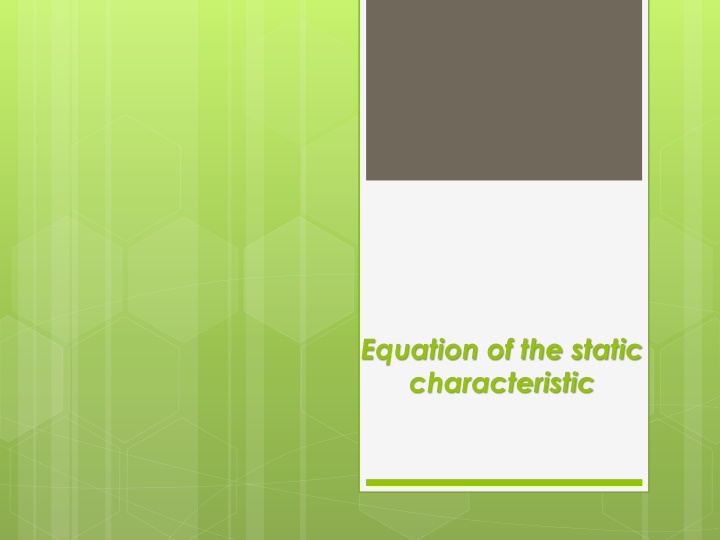
Diode Characteristics and Parameters
Explore the static characteristic equation of diodes, learn about the Boltzmann diode equation, and understand important diode parameters like bulk resistance and junction resistance. Discover how to analyze diode behavior in forward and reverse biases.
Download Presentation

Please find below an Image/Link to download the presentation.
The content on the website is provided AS IS for your information and personal use only. It may not be sold, licensed, or shared on other websites without obtaining consent from the author. If you encounter any issues during the download, it is possible that the publisher has removed the file from their server.
You are allowed to download the files provided on this website for personal or commercial use, subject to the condition that they are used lawfully. All files are the property of their respective owners.
The content on the website is provided AS IS for your information and personal use only. It may not be sold, licensed, or shared on other websites without obtaining consent from the author.
E N D
Presentation Transcript
Equation of the static characteristic
Equation of the static characteristic: The volt-ampere characteristics described recently are called static characteristics because they describe the d.c behavior of the diode. The forward and reverse characteristics have been combined into a single diagram as shown below:
The characteristics can be described by the analytical called Boltzmann diode equation given as below: ?? ?? ?) I = Io(? (Ampere) Where: Io= V = biased and negative for reverse biased). K = Boltzmann constant (1.38 * 10-23J/oK) T = Crystal temperature in oK (Eta) = 1 For germanium = 2 For silicon Diode reverse saturation current Voltage across junction (positive for forward
Hence, the above diode equation becomes: ?? ?? 1) for germanium I = Io(? ?? 2?? 1) for silicon I = Io(? Now, e/K = 11600 11600 ? ? I = Io(? 1) And putting T/11600 = VT, the above equation may be written as: ? I = Io(? ?? 1)
Now, at room temperature of (273 + 20) = 293oK , VT= 293/ 11600 = 0.025 V = 25 mV. Substituting the value of , we have: I = Io(?40? 1) for germanium = Io(?40?) when v > 1 volt I = Io(?20? 1) for silicon = Io(?20?) when v > 1 volt We may also write the above diode equation as under: ?? ?? 1) forward bias ?? ?? 1) reverse bias I = Io(? I = Io(?
Diode parameter 1- Bulk resistance (rB): It is the sum of the resistance values of the P- and N- type semiconductor materials of which the diode made of. rB= rP+ rNUsually, it is very small, and given by: rB=( ?? ??) ?? Where: VBis barrier potential It is the resistance offered by the diode well above the barrier voltage i.e when current is large. Obviously, this resistance is offered in the forward direction.
2-Junction resistance (rj): It is also known as incremental resistance and is an important parameter particularly in connection with small signal operations of the diode. Its value for forward-bias junction depends on the magnitude of forward dc current.
rj = dV/dI or gj = dI/dV ? Now, I = Io (? ?? 1) ? ?? ? ? ?? gj = ?? ?? = ? ? ? ? or I +? ?= ? ? ? Since ? ?? = ?? ? ?? = ?+? ? ?? So rj = ?? ?+? ?
rj = 25 (mV) / IF (mA) for Ge = 50 (mV) / IF (mA) for Si Obviously, it is a variable resistance.
3-Dynamic or ac resistance: racor rd = rB + rj Note that: For large values of forward current, rj is negligible. Hence rac = rB . For small values of IF, rB is negligible as compared to rj . Hence rac = rj. 4- Reverse dc resistance RR = ??????? ??????? ??????? ???????
Example: Solution :
Example: Solution :
Example: Solution :






















